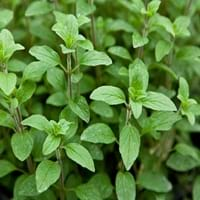Life Span
Perennial
Perennial
Origin
North America, United States, Northeastern United States, Mid-Atlantic United States, Southeastern United States, North-Central United States, South-Central United States, Texas
Hybrid origin
Types
not available
Not Available
Number of Varieties
Not Available
Habitat
Boggy areas, Fens, Fields, meadows, Swamps, Woodlands
Grassland, Open scrub, Rocky areas
USDA Hardiness Zone
4-9
6-9
Sunset Zone
1a, 1b, 2a, 2b, 3a, 3b, 4, 5, 6, 7
4, 5, 6, 7, 8, 9, 10, 11, 12, 13, 14, 15, 16, 17, 18, 19, 20, 21, 22, 23, 24
Habit
Thicket/Colonizing
Clump-Forming
Flower Color
Not Available
White, Ivory
Flower Color Modifier
Not Available
Bicolor
Fruit Color
Red
Not Available
Leaf Color in Spring
Not Available
Green
Leaf Color in Summer
Not Available
Green
Leaf Color in Fall
Not Available
Green
Leaf Color in Winter
Not Available
Light Green
Plant Season
Spring, Fall, Winter
Summer, Fall
Sunlight
Full Sun, Partial Sun
Full Sun, Partial Sun
Growth Rate
Medium
Medium
Type of Soil
Clay, Loam
Loam, Sand
The pH of Soil
Acidic, Neutral, Alkaline
Acidic, Neutral, Alkaline
Soil Drainage
Average
Well drained
Bloom Time
Late Spring
Early Summer, Summer
Tolerances
Not Available
Drought
Where to Plant?
Ground, Pot
Container, Ground, Pot
How to Plant?
Divison, Seedlings
Seedlings
Plant Maintenance
Medium
Medium
Watering Requirements
Keep the ground moist but not water-logged
Allow soil to be completely dry in between waterings, Does not require lot of watering, Water twice a day in the initial period, Water when soil is dry
In Summer
Lots of watering
Lots of watering
In Spring
Moderate
Moderate
In Winter
Average Water
Average Water
Soil pH
Acidic, Neutral, Alkaline
Acidic, Neutral, Alkaline
Soil Type
Clay, Loam
Loam, Sand
Soil Drainage Capacity
Average
Well drained
Sun Exposure
Full Sun, Partial Sun
Full Sun, Partial Sun
Pruning
Prune after flowering, Prune in early spring, Remove damaged leaves, Remove dead branches, Remove dead leaves
Prune for shortening long shoots, Prune if you want to improve plant shape, Remove dead or diseased plant parts, Remove deadheads
Fertilizers
All-Purpose Liquid Fertilizer, Compost, Fertilize every year, Mulch, Nitrogen
All-Purpose Liquid Fertilizer
Pests and Diseases
Aphids, Apple Maggot, Fall Webworm, Red blotch, Scale
Aphids, Cutworms, Mint rust, Spider mites, Thripes
Plant Tolerance
Not Available
Drought
Flower Petal Number
Not Available
Single
Fragrant Bark/Stem
No
Yes
Foliage Texture
Not Available
Medium
Foliage Sheen
Not Available
Matte
Attracts
Birds
Not Available
Allergy
Not Available
no allergic reactions
Aesthetic Uses
Showy Purposes
Not Used For Aesthetic Purpose
Beauty Benefits
Not Available
Not Available
Environmental Uses
Air purification
Air purification
Medicinal Uses
Not Available
Bloating, Bronchitis, Cough, Cramps, Croup, Gastrointestinal disorders, Headache, Rheumatoid arthritis, Urinary tract problems
Part of Plant Used
Fruits
Leaves
Other Uses
Used As Food, Used as Ornamental plant
Employed in herbal medicine, Used As Food
Used As Indoor Plant
No
Yes
Used As Outdoor Plant
Yes
Yes
Garden Design
Cutflower, Mixed Border, Screening, Wind Break
Container, Edging, Edible, Herb / Vegetable, Rock Garden / Wall
Botanical Name
ARONIA arbutifolia
ORIGANUM x majoricum
Common Name
Red Chokeberry
Hardy Marjoram, Italian Oregano
In Hindi
लाल Chokeberry
इतालवी अजवायन की पत्ती
In German
Rote Apfelbeere
Italienisch Oregano
In French
Red Chokeberry
italien origan
In Spanish
rojo Chokeberry
orégano italiano
In Greek
κόκκινο Chokeberry
ιταλικά Ρίγανη
In Portuguese
Red Chokeberry
Italiano Oregano
In Polish
Red aronii
włoski Oregano
In Latin
arbutifolia
Italian Oregano
Phylum
Magnoliophyta
Magnoliophyta
Class
Magnoliopsida
Magnoliopsida
Family
Rosaceae
Lamiaceae
Clade
Angiosperms, Eudicots, Rosids
Not Available
Tribe
Not Available
Not Available
Subfamily
Not Available
Not Available
Number of Species
Not Available
Not Available
Season and Care of Red Chokeberry and Italian Oregano
Season and care of Red Chokeberry and Italian Oregano is important to know. While considering everything about Red Chokeberry and Italian Oregano Care, growing season is an essential factor. Red Chokeberry season is Spring, Fall and Winter and Italian Oregano season is Spring, Fall and Winter. The type of soil for Red Chokeberry is Clay, Loam and for Italian Oregano is Loam, Sand while the PH of soil for Red Chokeberry is Acidic, Neutral, Alkaline and for Italian Oregano is Acidic, Neutral, Alkaline.
Red Chokeberry and Italian Oregano Physical Information
Red Chokeberry and Italian Oregano physical information is very important for comparison. Red Chokeberry height is 180.00 cm and width 12.70 cm whereas Italian Oregano height is 45.70 cm and width 25.40 cm. The color specification of Red Chokeberry and Italian Oregano are as follows:
Red Chokeberry flower color: Not Available
Red Chokeberry leaf color: Not Available
Italian Oregano flower color: White and Ivory
- Italian Oregano leaf color: Green
Care of Red Chokeberry and Italian Oregano
Care of Red Chokeberry and Italian Oregano include pruning, fertilizers, watering etc. Red Chokeberry pruning is done Prune after flowering, Prune in early spring, Remove damaged leaves, Remove dead branches and Remove dead leaves and Italian Oregano pruning is done Prune for shortening long shoots, Prune if you want to improve plant shape, Remove dead or diseased plant parts and Remove deadheads. In summer Red Chokeberry needs Lots of watering and in winter, it needs Average Water. Whereas, in summer Italian Oregano needs Lots of watering and in winter, it needs Average Water.





